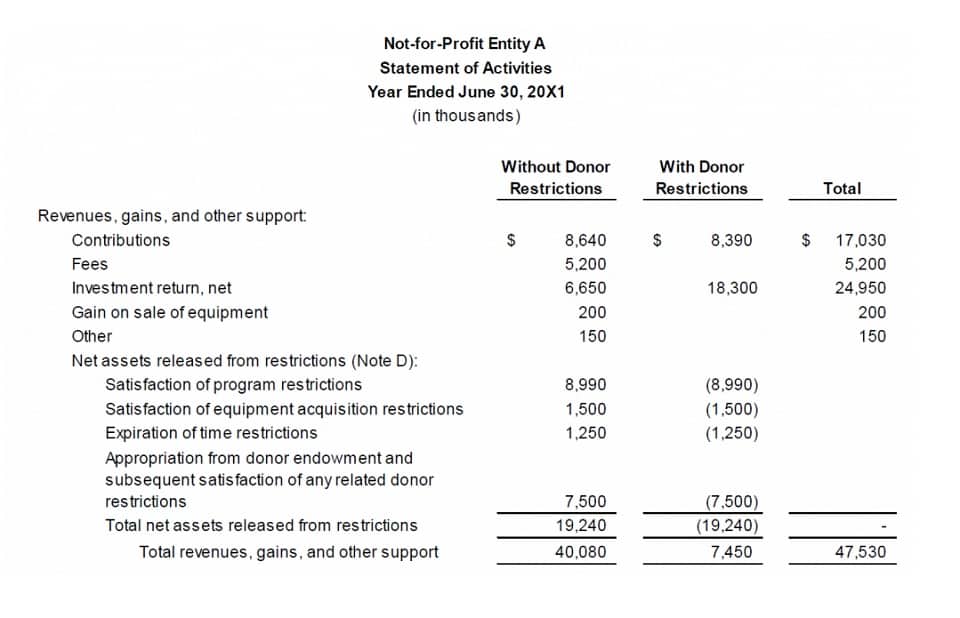
This is especially true for a complex commission plan with a math-intensive and code-heavy commission formula in excel that’s tough to run if you’re not a finance professional. A well-designed plan can drive motivation and performance while ensuring fair compensation. Below are eight common commission structures, along with commission formulas to calculate earnings. The commission base is the revenue or profit a salesperson’s commission is based on. This can be the total sales revenue, the profit margin on sales, fixed assets or some other metric that reflects the salesperson’s contribution to the company’s bottom line.
- You can also compare different real estate agents’ rates and use this information in your negotiations.
- Tiered commission structures offer increases in rates based on sales volume, promoting higher sales efforts.
- It is essential to clarify the payment schedule and terms before beginning the commission-based work.
- Commission rates vary depending on industry standards, market conditions, and negotiation skills.
- This payment is usually a percentage of the total transaction value, acting as an incentive to complete the deal.
- Tiered commission structures adjust the rate based on factors like quota attainment or deal size.
How to Calculate Tiered Commission
If a sale doesn’t go through and the customer returns a product, you will need to adjust the commission paid out initially. This will make sure your earnings are fair and only linked to successful sales. I’ve seen people have their friends buy items and then return them a month later and split the commission with their friends. It’s a good idea to remove this possibility from the equation and keep things fair. This could add higher rates for surpassing sales targets or splits among multiple salespeople involved in a deal. A commission is a percentage of total sales as determined by the rate of commission.

What is a sales commission calculator?
- As indicated by this commission structure, gross profit (or gross margin) is tied to the profitability of a specific sale.
- This structure closely aligns your pay with your impact on the business.
- From the commission value you arrived at, deduct the share of your fellow reps if you were involved in closing any of the sales with them.
- Select an empty cell where you want to display the commission amount (let’s say C2).
- Multiplying the representative’s hourly rate or annual salary by the number of hours or days worked during the commission period will give you the base compensation.
You can also compare different real estate agents’ rates and use this information in your negotiations. It’s important to note that this commission is only payable upon the successful sale of the property, aligning the interests of both the seller and the realtor towards a favorable sale outcome. Make note of these as it will modify the total amount a sales rep makes in the calculation step. This plan calculates commission based on profit margins rather than revenue, aligning incentives with profitability.
- Even if you have figured out how to calculate commissions, doing it on spreadsheets is a lot of work and easily prone to errors.
- This formula will apply the IF formula to each sales amount in the range and then use the SUM function to add up the bonuses for all the sales in the range to give the total bonus earned.
- First off, when figuring out sales commissions, you need to choose the commission period – this is typically a month or bi-weekly span, during which sales will count towards earning commissions.
- It’s important to note that this commission is only payable upon the successful sale of the property, aligning the interests of both the seller and the realtor towards a favorable sale outcome.
- Larger companies that take longer to get client payments or who need more liquidity may opt for more time between commission payments (monthly or quarterly).
What is the realtor commission?
Gross profit commission is a commission calculation method based on the gross profit generated by each sale. Profit margin commission is a commission calculation method that rewards sales representatives based on the profit margin of each sale. In a tiered commission structure, sales representatives earn different commission rates depending on their sales performance. Typically, as sales targets increase or specific milestones are met, commission rates escalate accordingly. For example, a salesperson might earn a 5% commission on sales up to $10,000, how to find the commission but if they exceed $10,000 in sales, their commission rate might increase to 7% for sales beyond that threshold. Tiered commission structures offer a dynamic approach to commission calculation, where commission rates vary based on sales targets or milestones achieved by sales professionals.

Some companies review commission rates annually, while others may review them more frequently or less frequently. This model rewards sales reps with recurring commissions from long-term clients. This plan rewards reps with commission only when they exceed a set sales quota, making it an effective strategy to push high performance.
Calculating the Commission
They all mean the same thing and act as a real estate cash flow great way to motivate reps and reward performance. RevOps, sales leaders, and finance teams use our free tool to ensure reps’ on-target earnings and quotas line up with industry standards. Customize plans with accelerators, bonuses, and more, by adjusting 9 variables. Yes, commission rates are often negotiable and can vary depending on factors like the property’s location, market conditions, and the realtor’s policies.

- In conclusion, commission is a critical part of business transactions.
- When you successfully place an applicant for employment, you are frequently compensated with a commission, typically a portion of the candidate’s annual pay.
- We can make this process so much easier for you through our automated commission tracking software.
- Territory-based commission, also called a territory volume commission, rewards sales reps based on the total sales volume for a territory, regardless of their role in revenue.
In this article, we will walk you through the steps and formulas to create a sales commission spreadsheet. A commission tier is a structure that sets different commission rates based on varying performance levels. For example, a sales representative might receive a commission rate of 10% on the first $50,000 of sales, 12% on the next $50,000, and 15% on any sales above $100,000. Industries such as retail, manufacturing, distribution, and wholesale often utilize profit margin commission structures to motivate sales teams and drive efficient sales practices. Employers and business owners can use commission rate calculators to plan and budget for labor costs. By forecasting commission expenses based on expected sales or revenue, businesses can make informed financial decisions.

